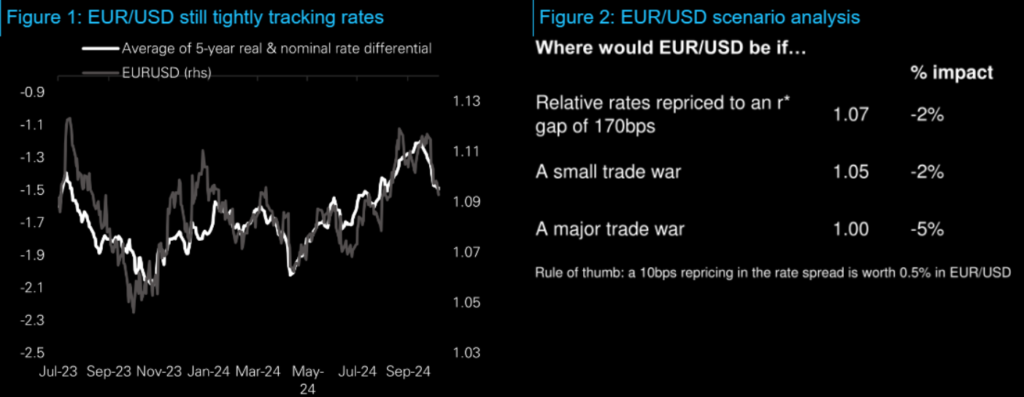In recent financial analyses, Deutsche Bank’s strategist, George Saravelos, has provided a detailed outlook on the euro’s trajectory, specifically focusing on the EUR/USD exchange rate. Saravelos accurately predicted the euro’s recent decline and offers insight into potential future movements. He suggests that barring any global trade shocks, the euro could stabilize within a range of 1.10 to 1.05 against the dollar. His perspective leans towards the lower end of this range, aligning with Deutsche Bank’s existing year-end forecasts for the currency. This sentiment underscores a cautious outlook amid ongoing economic fluctuations and geopolitical tensions.
Saravelos elaborates on the implications of a possible global trade war, asserting that such a scenario could drive the euro below the 1.05 threshold and approach parity with the dollar. This projection reflects concerns over rising risk premiums and the dollar’s appeal, which could further dampen the euro’s standing. However, he notes that the current forecasts do not fully integrate the potential for heightened dollar strength due to increasing global uncertainties, hinting at evolving dynamics in international finance. The anticipation of these developments indicates a complex interplay between trade policies and currency values.
As the global economic landscape faces uncertainties, Saravelos’ outlook remains vigilant, particularly in the context of upcoming events, such as the US election. This is considered a pivotal moment that may impact currency valuations significantly. In his assessments, he plans to revisit and adjust the forecasts to incorporate the ramifications of the election results, forecasting potential shifts in market sentiments and capital flows that could affect both the euro and the dollar.
Moreover, the euro’s performance is closely tied to broader economic indicators within the Eurozone, including inflation rates, employment figures, and growth forecasts. These internal metrics play a crucial role in shaping perceptions among investors and policymakers alike, influencing their strategies in the currency market. Saravelos recognizes that any significant disruptions—be they economic or geopolitical—could have pronounced consequences for the euro’s value moving forward, emphasizing the need for close monitoring of both domestic and international developments.
In contemplating the future of the euro, it is essential to consider external factors beyond just trade disputes. Issues such as monetary policy changes from central banks, shifts in investor risk appetite, and broader geopolitical stability will all play significant roles. For the euro to regain strength or maintain its current standing, the Eurozone must navigate these complexities effectively, ensuring that it can respond to unforeseen challenges while fostering an environment conducive to growth.
Lastly, Saravelos’ analysis serves as a reminder of the inherent volatility within the forex market, particularly for the euro. As traders and investors look ahead, the focus will be on digesting incoming economic data and geopolitical developments that could signal shifts in currency trends. By keeping a close eye on these factors, market participants can better position themselves in anticipation of where the euro’s value may head amidst the swirling uncertainties of the global economic climate.

